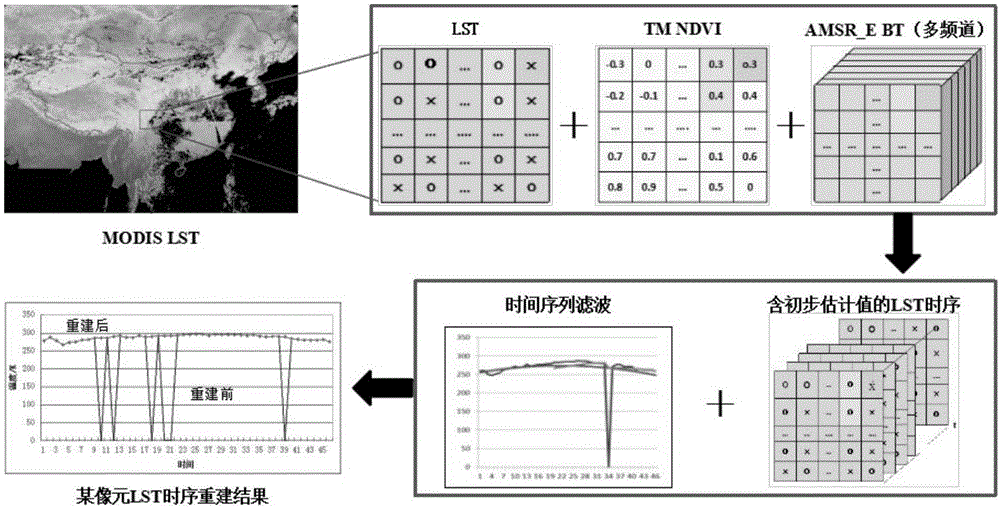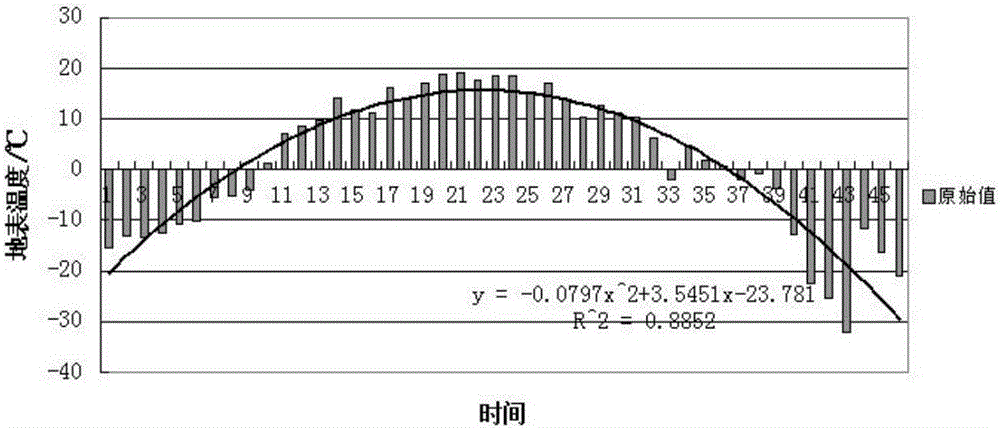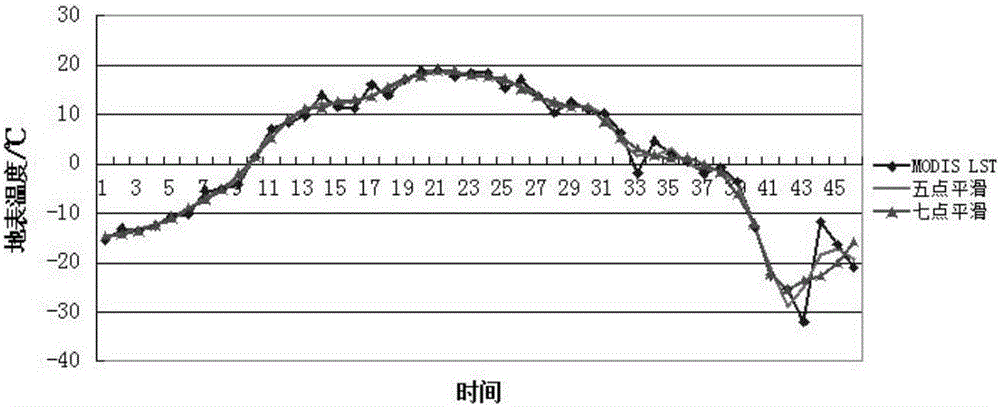Under-the-cloud pixel LST estimation method based on microwave remote sensing and space-time information
A remote sensing and pixel technology, applied in computing, image enhancement, image analysis, etc., can solve the problems of large inversion error, low inversion accuracy, and low algorithm practicability.
- Summary
- Abstract
- Description
- Claims
- Application Information
AI Technical Summary
Problems solved by technology
Method used
Image
Examples
Embodiment Construction
[0050] The present invention will be further explained below in conjunction with specific embodiments.
[0051] refer to Figure 1-3 , a method for estimating the pixel LST under the cloud based on microwave remote sensing and spatio-temporal information proposed by the present invention, comprising the following steps:
[0052] S1. After the Landsat / TM remote sensing dataset is preprocessed by radiometric correction, atmospheric correction, and resampling, its NDVI is calculated using the ENVI band calculation function. The formula is as follows:
[0053] NDVI=(b4-b3) / (b4+b3) 1
[0054] In the formula, b3 and b4 are the reflectivity of the third channel and the fourth channel respectively.
[0055] According to the NDVI value, the present invention divides the land cover into 6 categories, namely: NDVI<0; 0≤NDVI<0.1; 0.1≤NDVI<0.3; 0.3≤NDVI<0.5; 0.5≤NDVI<0.7;
[0056] S2, pixel segmentation: research shows that 37GHz is less affected by water vapor, cloud, rain, etc. It is...
PUM
 Login to View More
Login to View More Abstract
Description
Claims
Application Information
 Login to View More
Login to View More - R&D
- Intellectual Property
- Life Sciences
- Materials
- Tech Scout
- Unparalleled Data Quality
- Higher Quality Content
- 60% Fewer Hallucinations
Browse by: Latest US Patents, China's latest patents, Technical Efficacy Thesaurus, Application Domain, Technology Topic, Popular Technical Reports.
© 2025 PatSnap. All rights reserved.Legal|Privacy policy|Modern Slavery Act Transparency Statement|Sitemap|About US| Contact US: help@patsnap.com



